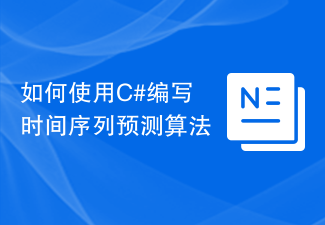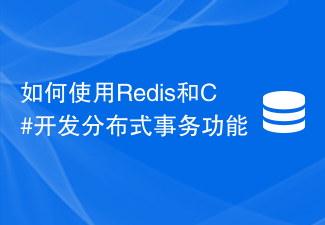Most netizens summarized "==" and Equals like this:
"==" compares the values of two variables for equality.
Equals compares whether two variables point to the same object.
For example: this article, and take the examples in this article as an example.
public class Person
{
public Person(string name)
{
this.Name = name;
}
public string Name { get; set; }
}
static void Main(string[] args)
{
string a = new string(new char[] { 'h', 'e', 'l', 'l', 'o' });
string b = new string(new char[] { 'h', 'e', 'l', 'l', 'o' });
Console.WriteLine(a == b); //true
Console.WriteLine(a.Equals(b)); //true
object g = a;
object h = b;
Console.WriteLine(g == h); //false
Console.WriteLine(g.Equals(h)); //true
Person p1 = new Person("jia");
Person p2 = new Person("jia");
Console.WriteLine(p1 == p2); //false
Console.WriteLine(p1.Equals(p2)); //false
Person p3 = new Person("jia");
Person p4 = p3;
Console.WriteLine(p3 == p4); //true
Console.WriteLine(p3.Equals(p4)); //true
Console.ReadKey();
}If the above conclusion is correct and "==" compares the values of two variables to be equal, then the following code should not be True.
Console.WriteLine(a == b); //true

Obviously, the two string variables above: a and b point to two different objects, that is, the memory addresses they store in the stack space are also different. But why are they equal?
2. What is operator overloading?
Operator overloading is to redefine an existing operator and give it another function to adapt to different data types. Let’s make a simple analogy: “+” operator, in “+” two
When all edges are variables of numerical type, the "+" operator represents the mathematical meaning of "+". If either side of the "+" operator is of string type, then the "+" operator represents a connection
The meaning of the string. There are many examples of such operator overloading, so does this have anything to do with the topic of this article? What I want to say is that the above string variables: a, b are because of the String class
Overloaded operator "==", see the following source code:
public static bool operator == (String a, String b)
{
return String.Equals(a, b);
}
public static bool operator != (String a, String b)
{
return !String.Equals(a, b);
}It is obvious that the "==" operator is really overloaded in the String class, and not only "==" but also "!=". And directly call the Equals method in the String class inside the overloaded operator method,
The source code is as follows:
public static bool Equals(String a, String b)
{
if ((Object)a==(Object)b)
{
return true;
}
if ((Object)a==null || (Object)b==null)
{
return false;
}
if (a.Length != b.Length)
return false;
return EqualsHelper(a, b);
}From the above: The "==" operator does not necessarily compare whether the values stored in two variables are equal. This depends on whether the current operator is overloaded in the current type.
3. Rewriting of Equals
Still the above example:
string a = new string(new char[] { 'h', 'e', 'l', 'l', 'o' });
string b = new string(new char[] { 'h', 'e', 'l', 'l', 'o' });
Console.WriteLine(a == b); //true
Console.WriteLine(a.Equals(b)); //trueIt can be seen from the above that: a and b are two different objects. But if Equals is True, the above conclusion: "Equals compares whether two variables point to the same object" is not valid. reason
Look at the Equals method in the String class:
public override bool Equals(Object obj) <br> {
if (this == null) //this is necessary to guard against reverse-pinvokes and
throw new NullReferenceException(); //other callers who do not use the callvirt instruction
String str = obj as String;
if (str == null)
return false;
if (Object.ReferenceEquals(this, obj))
return true;
if (this.Length != str.Length)
return false;
return EqualsHelper(this, str);
}
public bool Equals(String value) <br> {
if (this == null) //this is necessary to guard against reverse-pinvokes and
throw new NullReferenceException(); //other callers who do not use the callvirt instruction
if (value == null)
return false;
if (Object.ReferenceEquals(this, value))
return true;
if (this.Length != value.Length)
return false;
return EqualsHelper(this, value);
}As can be seen from the above, the String class not only rewrites the Equals in Object but also has its own Equals method, but the implementation code is almost the same. Comparison type, memory address,
Actual value to obtain the final result. So Equals is not necessarily a single comparison of whether the reference addresses are the same, not to mention that we can also rewrite and customize it. But rewrite
Equals also needs attention, that is, if you need to use HashMap, HashSet, Hashtable, then you also need to rewrite GetHashCode().
4. Why do we need Equals when we have "=="?
There is a Chinese saying: "The existence of anything must have its own reason and value." The same goes for "==" and Equals. The most basic implementation of "==" in reference types is to compare
Compare whether the memory addresses of the two objects are consistent. If they are consistent, they are equal, otherwise they are not equal. Such an implementation is obviously thought from a hardware perspective. If two objects are equal, they are the same object.
Then their addresses in memory must be equal. But many times "behavior (method)" depends on the perspective from which we observe the world. For example: String type, we declare a character
Strings care more about the actual value of the string, rather than whether the two objects are created once or twice in memory (that is, whether the memory addresses are equal), as long as they have the
If the actual values are equal, then we consider them to be equal. This is understood from the business logic of life rather than from a machine perspective. Of course the same string declared above
Whether variables are created once or twice I think: "Constant pool (or string detention pool)" has given us the best solution.
5. What is the relationship between "==" and Equals?
The "==" operator and Equals are actually complementary. Because: The main implementation form of the "==" operator is implemented from the "computer perspective (or hardware perspective)",
Equals is implemented based on common business scenarios or specific business scenarios. There is no inevitable connection between the two. You just choose different methods according to your own business needs.
So Equals in Object is Visual. It has been rewritten in many classes and truly achieves the specific behavior required in the current type, that is: polymorphism. So it is not difficult to explain the above:
object g = a; object h = b; Console.WriteLine(g == h); //false Console.WriteLine(g.Equals(h)); //true
Because the overloaded operator "==" is not implemented in Object, the current comparison method of "==" is to compare whether the memory addresses stored in the stack space of the two variables are the same. And Equals is
Call Equals in the String class because the g variable actually points to a string object during operation, and the current Object type is just the behavior of Visual studio and the compiler, that is: it is still polymorphic.
In the end, everything has its rules: "==" and Equals are no exception. For details, please click: Jump to MSDN.
The above is the detailed content of A brief analysis of the sample code of '==' and Equals in C#. For more information, please follow other related articles on the PHP Chinese website!
 如何使用C#编写时间序列预测算法Sep 19, 2023 pm 02:33 PM
如何使用C#编写时间序列预测算法Sep 19, 2023 pm 02:33 PM如何使用C#编写时间序列预测算法时间序列预测是一种通过分析过去的数据来预测未来数据趋势的方法。它在很多领域,如金融、销售和天气预报中有广泛的应用。在本文中,我们将介绍如何使用C#编写时间序列预测算法,并附上具体的代码示例。数据准备在进行时间序列预测之前,首先需要准备好数据。一般来说,时间序列数据应该具有足够的长度,并且是按照时间顺序排列的。你可以从数据库或者
 如何使用Redis和C#开发分布式事务功能Sep 21, 2023 pm 02:55 PM
如何使用Redis和C#开发分布式事务功能Sep 21, 2023 pm 02:55 PM如何使用Redis和C#开发分布式事务功能引言分布式系统的开发中,事务处理是一项非常重要的功能。事务处理能够保证在分布式系统中的一系列操作要么全部成功,要么全部回滚。Redis是一种高性能的键值存储数据库,而C#是一种广泛应用于开发分布式系统的编程语言。本文将介绍如何使用Redis和C#来实现分布式事务功能,并提供具体代码示例。I.Redis事务Redis
 如何实现C#中的人脸识别算法Sep 19, 2023 am 08:57 AM
如何实现C#中的人脸识别算法Sep 19, 2023 am 08:57 AM如何实现C#中的人脸识别算法人脸识别算法是计算机视觉领域中的一个重要研究方向,它可以用于识别和验证人脸,广泛应用于安全监控、人脸支付、人脸解锁等领域。在本文中,我们将介绍如何使用C#来实现人脸识别算法,并提供具体的代码示例。实现人脸识别算法的第一步是获取图像数据。在C#中,我们可以使用EmguCV库(OpenCV的C#封装)来处理图像。首先,我们需要在项目
 Redis在C#开发中的应用:如何实现高效的缓存更新Jul 30, 2023 am 09:46 AM
Redis在C#开发中的应用:如何实现高效的缓存更新Jul 30, 2023 am 09:46 AMRedis在C#开发中的应用:如何实现高效的缓存更新引言:在Web开发中,缓存是提高系统性能的常用手段之一。而Redis作为一款高性能的Key-Value存储系统,能够提供快速的缓存操作,为我们的应用带来了不少便利。本文将介绍如何在C#开发中使用Redis,实现高效的缓存更新。Redis的安装与配置在开始之前,我们需要先安装Redis并进行相应的配置。你可以
 如何使用C#编写动态规划算法Sep 20, 2023 pm 04:03 PM
如何使用C#编写动态规划算法Sep 20, 2023 pm 04:03 PM如何使用C#编写动态规划算法摘要:动态规划是求解最优化问题的一种常用算法,适用于多种场景。本文将介绍如何使用C#编写动态规划算法,并提供具体的代码示例。一、什么是动态规划算法动态规划(DynamicProgramming,简称DP)是一种用来求解具有重叠子问题和最优子结构性质的问题的算法思想。动态规划将问题分解成若干个子问题来求解,通过记录每个子问题的解,
 C#开发中如何处理跨域请求和安全性问题Oct 08, 2023 pm 09:21 PM
C#开发中如何处理跨域请求和安全性问题Oct 08, 2023 pm 09:21 PMC#开发中如何处理跨域请求和安全性问题在现代的网络应用开发中,跨域请求和安全性问题是开发人员经常面临的挑战。为了提供更好的用户体验和功能,应用程序经常需要与其他域或服务器进行交互。然而,浏览器的同源策略导致了这些跨域请求被阻止,因此需要采取一些措施来处理跨域请求。同时,为了保证数据的安全性,开发人员还需要考虑一些安全性问题。本文将探讨C#开发中如何处理跨域请
 如何实现C#中的图像压缩算法Sep 19, 2023 pm 02:12 PM
如何实现C#中的图像压缩算法Sep 19, 2023 pm 02:12 PM如何实现C#中的图像压缩算法摘要:图像压缩是图像处理领域中的一个重要研究方向,本文将介绍在C#中实现图像压缩的算法,并给出相应的代码示例。引言:随着数字图像的广泛应用,图像压缩成为了图像处理中的重要环节。压缩能够减小存储空间和传输带宽,并能提高图像处理的效率。在C#语言中,我们可以通过使用各种图像压缩算法来实现对图像的压缩。本文将介绍两种常见的图像压缩算法:
 如何实现C#中的遗传算法Sep 19, 2023 pm 01:07 PM
如何实现C#中的遗传算法Sep 19, 2023 pm 01:07 PM如何在C#中实现遗传算法引言:遗传算法是一种模拟自然选择和基因遗传机制的优化算法,其主要思想是通过模拟生物进化的过程来搜索最优解。在计算机科学领域,遗传算法被广泛应用于优化问题的解决,例如机器学习、参数优化、组合优化等。本文将介绍如何在C#中实现遗传算法,并提供具体的代码示例。一、遗传算法的基本原理遗传算法通过使用编码表示解空间中的候选解,并利用选择、交叉和


Hot AI Tools

Undresser.AI Undress
AI-powered app for creating realistic nude photos

AI Clothes Remover
Online AI tool for removing clothes from photos.

Undress AI Tool
Undress images for free

Clothoff.io
AI clothes remover

AI Hentai Generator
Generate AI Hentai for free.

Hot Article

Hot Tools

VSCode Windows 64-bit Download
A free and powerful IDE editor launched by Microsoft

SublimeText3 Mac version
God-level code editing software (SublimeText3)

Zend Studio 13.0.1
Powerful PHP integrated development environment

mPDF
mPDF is a PHP library that can generate PDF files from UTF-8 encoded HTML. The original author, Ian Back, wrote mPDF to output PDF files "on the fly" from his website and handle different languages. It is slower than original scripts like HTML2FPDF and produces larger files when using Unicode fonts, but supports CSS styles etc. and has a lot of enhancements. Supports almost all languages, including RTL (Arabic and Hebrew) and CJK (Chinese, Japanese and Korean). Supports nested block-level elements (such as P, DIV),

SAP NetWeaver Server Adapter for Eclipse
Integrate Eclipse with SAP NetWeaver application server.






